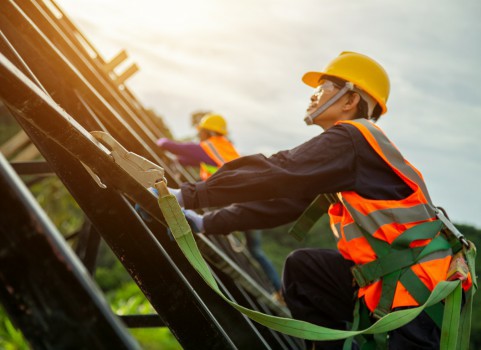Essential Insights: Working at Heights Safety and the Role of Training
Working at heights is a critical job function across various industries, from construction and maintenance to emergency services and telecommunications. However, with these duties come significant safety risks. Understanding these risks and implementing proper training is vital in preventing accidents that can lead to severe injuries or fatalities. In this blog post, we will delve into the key safety risks of working at heights and how well-structured Working at Heights Training can mitigate these risks.
Common Risks Associated with Working at Heights
When workers are involved in tasks above ground level, various hazards can emerge:
- Falls from Height: The most common risk, with potential outcomes ranging from minor injuries to fatalities.
- Unstable Surfaces: Working on scaffolds, roofs, or ladders that are not well secured can lead to accidents.
- Weather Conditions: Rain, wind, and ice can create hazardous conditions that increase the risk of slips and falls.
- Equipment Failures: Faulty or improperly maintained equipment, such as harnesses and ladders, can lead to accidents.
- Inadequate Lighting: Working in poorly lit areas makes it difficult to see hazards, increasing the likelihood of missteps and falls.
The Importance of Working at Heights Training
Working at Heights Training equips workers with the necessary skills and knowledge to perform their tasks safely. Proper training covers various aspects, including:
- Understanding Risks: Workers learn to identify and assess potential hazards when working at height.
- Use of Fall Protection Systems: Training provides guidance on using safety equipment such as harnesses, lanyards, and guardrails correctly.
- Safe Use of Equipment: Workers receive instruction on how to properly use ladders, scaffolding, and other necessary tools.
- Emergency Response Planning: Understanding what to do in case of an incident is crucial for minimizing injury during emergencies.
Fall Protection Systems
Fall protection systems are essential in minimizing the risk of injury during work at height. Here are a few critical components:
- Personal Protective Equipment (PPE): Includes items like safety harnesses which must be properly fitted and maintained.
- Guardrails: These act as barriers to prevent falls from elevated surfaces, especially in workplaces like construction sites.
- Safety Nets: Installed below work areas, they can catch a worker in the event of a fall.
- Warning Lines: Used to signify areas where a fall hazard exists, helping workers maintain safe distances.
Emergency Response Planning
No matter how much caution is taken, accidents can still occur. Hence, having an emergency response plan is crucial:
- Rescue Procedures: Staff should be trained on how to perform rescues safely, including the use of fall arrest systems.
- First Aid Training: Workers should be prepared to administer first aid while awaiting further medical assistance.
- Regular Drills: Conducting drills ensures all employees know their roles in case of an emergency.
Real-Life Case Studies
Training significantly contributes to enhancing workplace safety. Consider the following case studies:
- Construction Site in Dublin: A team working on a multi-storey building was undergoing Working at Heights Training. During a simulation exercise, workers identified weaknesses in their scaffolding setup. After implementing safety measures taught in training, they successfully mitigated a situation that could have resulted in a serious fall.
- Maine Road Repairs in Cork: Workers involved in road repairs on elevated platforms had taken a Working at Heights Certification course. A sudden gust of wind caused a worker to lose balance. However, thanks to their training in emergency response, another worker was able to stabilize the individual and prevent a fall.
- Telecommunication Setup in Galway: A crew was installing new antennas on a rooftop. They utilized the Working at Heights Safety Course knowledge to set up proper guardrails and ensure harnesses were secured. This preparedness was evident when equipment failure occurred, allowing the crew to act quickly and safely.
Conclusion
Working at heights carries inherent risks that can lead to serious accidents. However, by prioritizing Working at Heights Training, organizations can equip their employees with the necessary skills and knowledge to work safely and effectively. Emphasizing the importance of fall protection systems and having robust emergency response plans further protects workers from potential hazards. To ensure a safe working environment, enroll in a Working at Heights Course today.
For more information and to enroll in a certified course, visit Ireland Safety Training, or reach us at [email protected].



 349,500 Offered Certificates
349,500 Offered Certificates
 24/7 Online Training
24/7 Online Training
 Money Back Guarantee
Money Back Guarantee
 Fully Accredited Courses
Fully Accredited Courses
